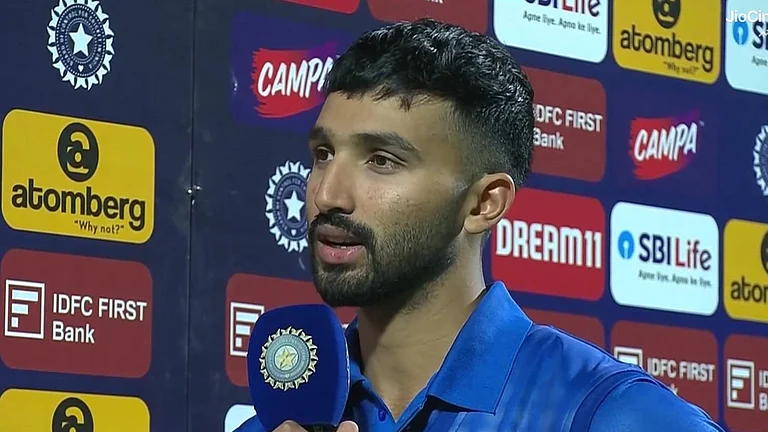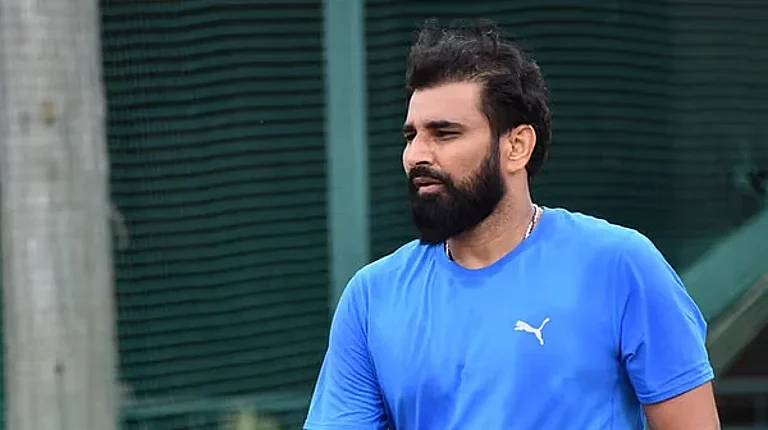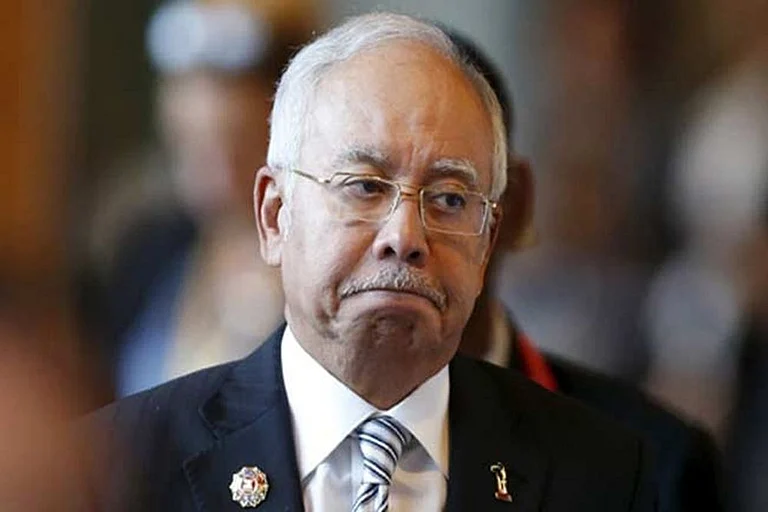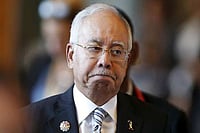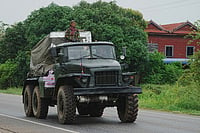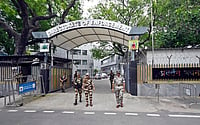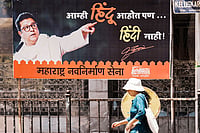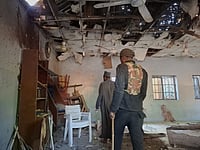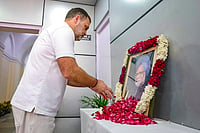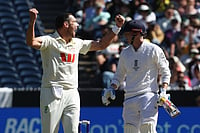Movers & Shakers

Girija Prasad Koirala
Despised by the country's elite, the 85-year-old Nepali Congress president heads the seven-party alliance (SPA). Keeps ill, smokes heavily and is asthmatic. As PM, will negotiate to bring Maoists into the mainstream, frame a new Constitution and keep the SPA intact. Family squabbles involving daughter Sujatha, nephew Shashank, relatives Sushil and Shekhar have divided his party.

King Gyanendra
His family has dominated Nepal for 250 years, the monarchy still has supporters. Will try to split the SPA, and bring his influence to bear on politics. Until a new constitution redefines his role, or abolishes the monarchy, he'll control the army, and retain the powers to dismiss governments. Can play mischief.

Pushpa Kamal Dahal
Popularly known as Prachanda, or the fiery one, he is the chairman of the Communist Party of Nepal (Maoist). Under-ground since 1980, many had thought he was a fictional figure. A diehard opponent of the monarchy, his party controls the large swathes of rural Nepal. On him depends Nepal's hope to have a stable and peaceful future.

Baburam Bhattarai
A former PhD student of JNU, he earned his political spurs in Delhi, organising Nepali migrant workers. He is the principal Maoist ideologue, its popular face and has authored several articles justifying violence as a means for social change. Almost sure to lead the Maoist team for talks.

Madhav Nepal
General secretary of the Communist Party of Nepal-United Marxist Leninist, he has been the driving force behind the SPA. Proposed Koirala's name as PM. His party and the Maoists will have to vie for the same political space should they participate in future elections. Hated by the king, his term as general secretary expires in '07.

Pyar Jung Thapa
The Royal Nepal Army chief isn't expected to play spoilsport. But the problem is he retires in September. The man expected to succeed him is Rumangat Katuwal, a hardcore royalist. Thapa studied in military academies in India but is soft on Pakistan.

Sher Bahadur Deuba
Three times PM, he is widely seen as America's man. His wife Dr Arzoo Deuba is closely linked to the king. Split the Nepali Congress to form his outfit. Potential PM should Koirala fade from the scene.
***
It's a scorchingly hot Tuesday; it has just been 12 hours since King Gyanendra went on television to announce the restoration of democracy. On roofs of buildings around Narain Gopal Chowk, a stone's throw away from the house of Nepali Congress leader G.P. Koirala, people are celebrating the retreat of an implacable monarch. They are cheering the crowds thronging the four roads leading to the chowk. From the roofs, people take turns to direct jets of water from hose pipes on the crowds below. As the water falls like rain, the cheering gets deafening. Pouring water on agitators is a symbolic ritual in Kathmandu: it means that though it's hot, the water will cool tempers and help them stay the course. It means the people of Kathmandu stand firmly behind the children of the revolution.
For 19 long days, these young revolutionaries, some barely in their teens, had brought Kathmandu to a halt through an unprecedented display of people power. They are now savouring their victory. But they also have an eye on the future. Slogans exhort political leaders not to deviate from the target of a constituent assembly or otherwise prepare to face dire consequences. No one can ignore the call. Not the politicians, not the Maoists, and certainly not the king, who gracelessly capitulated late on April 24.
The king's capitulation need not have been so graceless. Kathmandu is convinced that the end could have come last Friday. They say perhaps India's special envoy, Karan Singh, delivered a message from Delhi that was too soft. For, barely had the king made his April 21 announcement inviting politicians to form a government but not reviving parliament or relinquishing his powers, New Delhi welcomed his declaration with alacrity.
The king's speech provoked lakhs of disappointed people to swarm the streets of Kathmandu the following day. And they perceived the Karan Singh mission as a heartless effort to bolster the monarchy. Anti-India SMSes started doing the rounds. They were left aghast as Prime Minister Manmohan Singh, on his way to Germany, said there had been "no change" in India's position on the constitutional monarchy. His national security advisor added that should the Royal Nepal Army (RNA) want, India could resume re-arming it. Worse, the hectic behind-the-scenes diplomacy that ensued saw the Indians trying to persuade the political parties to take the king's invitation to form a government—and then challenge him from within.

But the seven-party alliance (SPA) was not willing. Its leaders felt the mood in the streets was so ugly that they could not survive any deviation from the path of electing a constituent assembly to frame a new constitution—a Maoist demand the people had so evidently endorsed over the fortnight. The politicians were also wary of the king, who could still invoke his constitutional authority to dismiss governments, as he had done three times between October 2002 and February 2005.
Becoming conscious that a popular consensus had built around the demand for a new constituent assembly, foreign secretary Shyam Saran addressed a hastily called press briefing in Delhi on April 22. He said India's statements welcoming the king's April 21 speech shouldn't be seen as an endorsement of him, that India was willing to accept what the Nepalis wanted. The following day, the PM, in Germany, said he expected the king to transfer all executive power to the parties.
Meanwhile, civil society detainees in Kathmandu dashed off a letter of recrimination to the ambassadors of India, the European Union, the United States and China, pointing out that the Nepali version of Gyanendra's address to the nation had carried no mention of his relinquishing the effective reins of power. They went to the extent of cautioning the foreign missions against falling for the king's ruse.
By Saturday afternoon, April 22, lakhs had gathered within a kilometre of the palace on two of its five approach roads, from Thamel and Delhi Bazaar. Inside the palace, the king sweated it out, surrounded by the RNA. The army formed concentric rings outside the Narayanhiti Palace, blocking all five arterial roads leading to it. In all, 48,000 soldiers, or half the total strength of the army, was deployed in Kathmandu alone. Had the crowd decided to march to the palace, a bloodbath could have followed. The subsequent repercussions for the beleaguered king could have been catastrophic. Only a blinding downpour prevented the people's advance on the palace.
Saran's press conference in Delhi conveyed to protesters that the tide of international opinion had turned against the king. Emboldened, the SPA rejected Gyanendra's call to form a government.
On Sunday morning, the mood had hardened all around. As people took to the streets, they not only chanted pro-republic slogans but also demanded the heads of Gyanendra and his errant son, Paras. The fear of the mob prompted Gyanendra to accept the writing on the wall—he must bow to popular will. Sources say the king sought the United Nations representative to Nepal, Mathew Kahane, to seek a way out. The Indian representative, Shiv Shankar Mukherjee, too met Gyanendra. Though embassy officials are tightlipped about what transpired at the meeting, political sources in Kathmandu say Gyanendra and Mukherjee discussed the legal issues surrounding the revival of parliament and the demands of the SPA.
Sources in the Nepali Congress say the bottomline was made clear to the palace:
- Reinstate parliament
- Recognise the 12-point roadmap charted by the SPA, endorse the Janandolan
- An unambiguous articulation that state power and sovereignty vests in the people
- No immunity for those guilty of excesses during the 19-day protests
- Condolence to be expressed for the deaths due to police firing.








